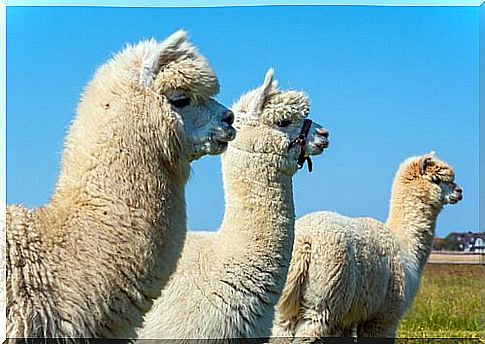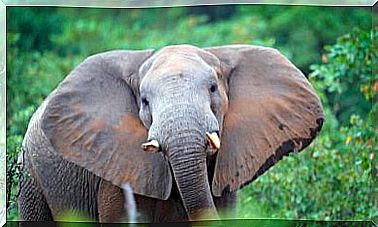Let’s Get To Know South American Camelids Together

Although when we think of a camel we imagine a hunchbacked animal living in the desert, this family also includes another species: the South American camelids.
If you want to find out all about South American camelids, keep reading the following article.
What are South American camelids?
The South American camelids belong to the family of the Camelids, divided into two genera and four species, which can mate with each other giving life to a cross.
South American camelids differ from other camels in that they have an elongated neck and digestive system capable of digesting some toxins.
Furthermore, throughout history they have been of great importance to South American civilizations and are currently respected and used for some human activities.
1. The vicuña
This mammal lives in the highlands of the Andes, particularly in Argentina, Bolivia, Chile, Ecuador and Peru. The vicuna lives in the Andes mountain range because it prefers habitats more than 3 200 meters above sea level.
The vicuna – see opening photo of the article – measures about 80 centimeters and weighs about 50 kilos. The color of the fur is beige or brown tending to light reddish, with white areas on the belly and legs.
The long legs with pads under the hoof allow it to walk without particular difficulty on various types of terrain.
Vicuna wool is considered one of the finest in the world and one of the warmest. In this way, the animal can survive the climate changes typical of the Puna.
2. The llama among the South American camelids
The lama is one of the South American camelids that populate the Altiplano of the Andes in Argentina, Bolivia, Chile, Ecuador and Peru.
It was very useful during the Inca Empire, both for wool and meat and as a means of loading and transport, and even for sacrifices.

Of medium size, with a long neck and small ears, the domestic llama has uniform light-colored fur, although some specimens may be brown or other shades.
The tail is almost non-existent and the legs, although short, are strong enough to be able to climb mountains carrying a heavy weight.
3. The guanaco
The guanaco, the third of the South American camelids on this list, is a wild animal that inhabits Chile, Bolivia, Argentina, Paraguay, and Peru.
It lives in flocks consisting of only one male, some females and their offspring. When the “boss” senses danger, he makes a sound called “bleating” to alert his family. Its main predator is the puma.

As for its physical characteristics, the guanaco is just under two meters long – it is the largest in Patagonia – and weighs around 100 kilos.
Its fur is brownish in color, with a lighter belly and dark head.
4. The alpaca
Finally, the alpaca, a South American camelid closely related to the vicuna that has been domesticated for thousands of years.
It can be found in the highlands of the Andes: to be precise in Argentina, Chile and Ecuador. Peru is the country with the largest alpaca population, and there are even herds in the United States, New Zealand and Europe, introduced by humans.

The alpaca has a height of 90 centimeters and weighs about 75 kilos; it is usually domesticated for its wool, which is of high quality and is used to sew the “poncho” (typical Andean clothing), but also scarves, vests, blankets and gloves.
The color of the coat is varied: brown, black, white or spotted specimens can be found.









